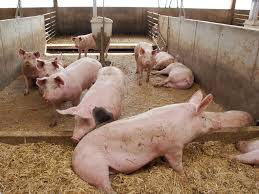Pig farming, also known as swine production, has become an integral part of the global agricultural landscape, providing meat, fat, and other valuable by-products.
As one of the most common forms of livestock farming, pig farming offers various advantages and disadvantages that impact farmers, consumers, and the environment.
One significant advantage of pig farming is its economic viability. Pigs are efficient converters of feed, producing a high amount of meat relative to their feed intake.
This efficiency can result in higher profit margins for farmers compared to other livestock. Additionally, pigs reproduce rapidly, with a typical sow giving birth to a litter of 8 to 12 piglets twice a year.
This allows farmers to increase their herd size quickly, providing more opportunities for income generation. The demand for pork remains robust in many regions, making pig farming a stable source of revenue for farmers.
Moreover, pig farming contributes to food security. As the world’s population continues to grow, the demand for protein sources increases.
Pork is a major source of animal protein for billions of people worldwide. By raising pigs, farmers can help meet this demand, ensuring a consistent supply of affordable meat.
Furthermore, pig farming can be integrated with crop production through the use of pig manure as organic fertilizer. This recycling of nutrients enhances soil fertility, promoting sustainable agricultural practices.
However, pig farming also has its disadvantages. One major concern is the environmental impact. Pigs produce large amounts of waste, which, if not managed properly, can lead to soil and water contamination.
Excessive runoff from pig farms can pollute nearby waterways, causing issues such as algal blooms and harm to aquatic life.
Furthermore, the greenhouse gas emissions from pig farming, including methane and ammonia, contribute to climate change and air pollution, raising concerns among environmentalists and policymakers.
Animal welfare is another critical issue associated with pig farming. Intensive farming practices, often used to maximize production, can lead to overcrowding and stress among pigs. These conditions can result in health problems, both for the animals and for the humans who consume their products.
Public awareness of animal welfare issues has led to increased scrutiny of pig farming practices, prompting some consumers to seek ethically produced meat alternatives.
Economic challenges also exist for pig farmers. Market fluctuations can lead to unstable prices for pork, making it difficult for farmers to predict their income.
Additionally, disease outbreaks, such as African swine fever, can devastate herds and significantly impact profitability. Farmers must invest in biosecurity measures and veterinary care to manage these risks, adding to their operational costs.
Economic Benefits of Pig Farming
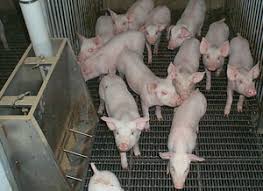
1. Income Generation: Pig farming can be a significant source of income for farmers, providing a steady cash flow. Pigs grow quickly and reproduce frequently, allowing for multiple sales within a year.
2. Job Creation: The pig farming industry creates jobs not only on farms but also in related sectors such as feed production, processing, and distribution. This helps boost the local economy and provides employment opportunities in rural areas.
3. Contribution to Local Economies: Pig farming stimulates local economies by supporting local businesses. Farmers purchase feed, veterinary supplies, and equipment from local suppliers, which keeps money circulating within the community.
4. Diverse Income Streams: Beyond selling live pigs, farmers can explore various income sources, including pork processing, selling by-products like hides and manure, and offering agritourism experiences, thereby diversifying their revenue streams.
5. Export Opportunities: In many regions, pig farming can open up opportunities for exporting pork and pork products. This not only enhances the income of farmers but also contributes to the overall economy by increasing foreign exchange earnings.
Nutritional Value of Pork
1. High Protein Content: Pork is an excellent source of high-quality protein, which is essential for muscle building, repair, and overall body function. It provides all nine essential amino acids needed for human health.
2. Rich in Vitamins and Minerals: Pork contains several essential vitamins and minerals, including B vitamins (especially B1, B3, B6, and B12), zinc, and iron. These nutrients are crucial for energy metabolism, immune function, and the production of red blood cells.
3. Healthy Fats: While pork does contain fat, it is important to note that it can also provide healthy fats. Choosing lean cuts can contribute to a balanced diet while still providing necessary energy.
4. Satiating Meal Option: Due to its high protein and fat content, pork can be more filling than other meat options, which may help control appetite and reduce overall calorie intake when consumed in moderation.
5. Versatile Ingredient: Pork can be prepared in various ways and incorporated into diverse cuisines, making it a flexible option in meal planning and catering to different dietary preferences.
Contribution to Rural Development
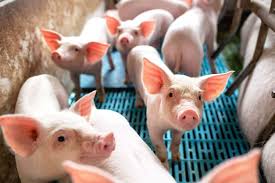
1. Income Stability for Rural Families: Pig farming offers a reliable source of income, helping to stabilize rural families’ financial situations. This income can be reinvested in the community, supporting local businesses and services.
2. Infrastructure Development: The establishment of pig farms can lead to improved infrastructure in rural areas, including better roads, transportation, and access to utilities. This development benefits the entire community.
3. Empowerment of Women: Pig farming can empower women in rural communities by providing them with economic opportunities and leadership roles. Many women engage in pig farming as a means of financial independence.
4. Knowledge Transfer: Pig farming encourages the sharing of knowledge and best practices among farmers, leading to enhanced agricultural skills and improved farming techniques, ultimately benefiting the entire rural community.
5. Community Cohesion: The collaborative nature of pig farming, including cooperatives and associations, fosters community engagement and cooperation, strengthening social ties among farmers and their families.
Environmental Impact of Pig Farming
1. Land Utilization: Pig farming requires land for housing, feeding, and breeding pigs. Proper management practices can ensure that land is used sustainably, promoting biodiversity and reducing soil degradation.
2. Waste Management Practices: Effective waste management is essential in pig farming to mitigate environmental pollution. Farmers can use manure as fertilizer, promoting nutrient recycling and reducing reliance on synthetic fertilizers.
3. Resource Efficiency: Pig farming can be resource-efficient, utilizing agricultural by-products and crop residues as feed, which minimizes waste and enhances sustainability in farming practices.
4. Carbon Footprint: While pig farming contributes to greenhouse gas emissions, adopting better management practices and technologies can reduce its carbon footprint. This includes optimizing feed conversion and improving animal health.
5. Advancements in Sustainable Practices: The pig farming industry is increasingly adopting sustainable practices, such as pasture-based systems and integrated farming approaches, to minimize environmental impact while enhancing productivity.
Animal Welfare Considerations
1. Living Conditions: Providing adequate housing is crucial for the well-being of pigs. Environments should be spacious, clean, and allow natural behaviors such as rooting and socializing. Proper bedding and ventilation are also important to maintain comfort.
2. Social Interaction: Pigs are social animals and thrive when allowed to interact with other pigs. Group housing systems can enhance their well-being by facilitating natural social structures and behaviors.
3. Handling Practices: Gentle and humane handling is essential to minimize stress. Training staff in low-stress handling techniques can promote animal welfare and reduce injuries, ensuring a positive experience for the pigs.
4. Access to Veterinary Care: Regular health checks and prompt veterinary care are necessary to monitor and maintain the health of pigs. Ensuring access to veterinary services helps prevent diseases and addresses any health concerns swiftly.
5. Nutrition and Enrichment: Providing a balanced diet tailored to the specific needs of pigs is vital for their health. Additionally, incorporating enrichment activities, such as toys or foraging opportunities, can improve mental stimulation and overall welfare.
Read Also: Bacterial Canker (Stone fruit trees): Description, Damages Caused, Control and Preventive Measures
Health Risks and Disease Management
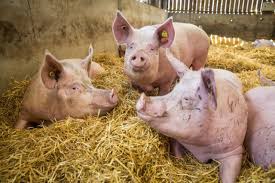
1. Common Diseases: Pigs are susceptible to various diseases, including respiratory illnesses, gastrointestinal infections, and parasitic infestations. Regular health monitoring and vaccination programs are essential for disease prevention.
2. Biosecurity Measures: Implementing strong biosecurity protocols can reduce the risk of disease outbreaks. This includes controlling access to farms, disinfecting equipment, and managing the movement of animals and people.
3. Nutritional Health: Proper nutrition plays a significant role in disease prevention. A well-balanced diet helps strengthen the immune system, making pigs less vulnerable to infections and illnesses.
4. Monitoring and Surveillance: Regular health assessments and monitoring systems can help detect early signs of disease. Keeping records of health issues and treatments allows for better management and quicker responses to outbreaks.
5. Management of Stress: Stress can weaken pigs’ immune responses, making them more prone to diseases. Ensuring a low-stress environment through proper handling, housing, and social interactions can enhance overall health and resilience.
Read Also: 18 Medicinal Health Benefits Of Hydnocarpus wightianus (Chaulmoogra)
Market Demand and Profitability
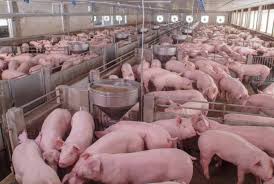
1. Consumer Trends: Understanding current consumer preferences, such as the demand for organic or free-range pork, is crucial for positioning products in the market. Adapting to these trends can enhance profitability.
2. Pricing Strategies: Analyzing market prices for pigs and pork products allows farmers to develop effective pricing strategies. This includes determining optimal selling times and exploring value-added products to maximize income.
3. Diversification of Products: Offering a range of pork products, including processed meats and specialty items, can attract different market segments. Diversification can help mitigate risks associated with fluctuating prices.
4. Market Access: Building relationships with local processors, retailers, and consumers can improve market access. Participating in farmers’ markets and community-supported agriculture (CSA) programs can also increase visibility and sales.
5. Cost-Benefit Analysis: Regularly assessing the costs of production against market prices helps determine profitability. Analyzing production efficiency and exploring ways to reduce expenses can enhance overall financial performance.
Initial Investment and Operating Costs
1. Startup Costs: Initial investment in pig farming includes costs for purchasing pigs, building or renovating facilities, and acquiring equipment. Planning a detailed budget helps ensure sufficient funding and resources.
2. Operational Expenses: Ongoing expenses such as feed, veterinary care, utilities, and labor must be carefully managed. Keeping track of these costs enables farmers to maintain profitability and identify areas for improvement.
3. Financing Options: Exploring financing options, such as loans or grants, can help cover startup and operational costs. Developing a solid business plan is essential to attract potential investors or lenders.
4. Cost Management Strategies: Implementing cost management practices, such as bulk purchasing of feed and supplies, can lead to significant savings. Regularly reviewing expenses and seeking efficiencies can improve financial stability.
5. Long-Term Planning: Considering long-term investments in infrastructure and technology can enhance productivity and reduce operating costs over time. Investing in sustainable practices can lead to long-term savings and environmental benefits.
Ethical Concerns in Pig Farming
1. Animal Rights: Ethical debates surrounding animal rights and welfare often raise concerns about how pigs are treated in farming systems. Ensuring humane treatment and respect for animals is crucial in addressing these concerns.
2. Environmental Sustainability: The environmental impact of pig farming, including waste management and resource consumption, is a significant ethical consideration. Adopting sustainable practices can help mitigate these impacts and promote responsible farming.
3. Transparency in Practices: Consumers increasingly demand transparency regarding farming practices and the treatment of animals. Providing clear information about how pigs are raised can build trust and improve marketability.
4. Cultural Sensitivity: Different cultures have varying views on pig farming and consumption. Being sensitive to these perspectives and addressing them in marketing and practices can foster understanding and acceptance.
5. Community Impact: Pig farming can affect local communities, including concerns about pollution, land use, and animal welfare. Engaging with the community and addressing their concerns can help build positive relationships and promote responsible farming practices.
Do you have any questions, suggestions, or contributions? If so, please feel free to use the comment box below to share your thoughts. We also encourage you to kindly share this information with others who might benefit from it. Since we can’t reach everyone at once, we truly appreciate your help in spreading the word. Thank you so much for your support and for sharing!

